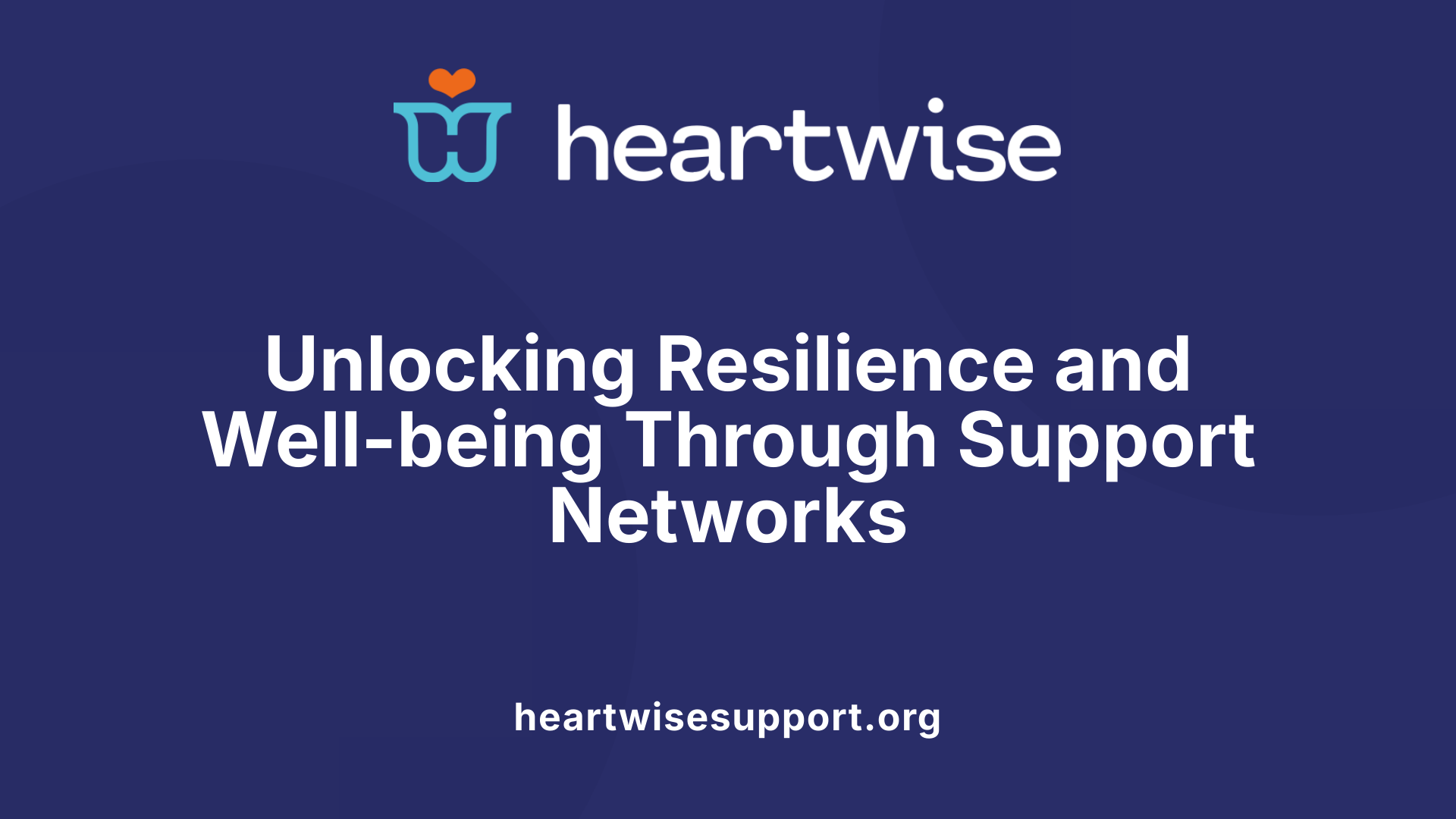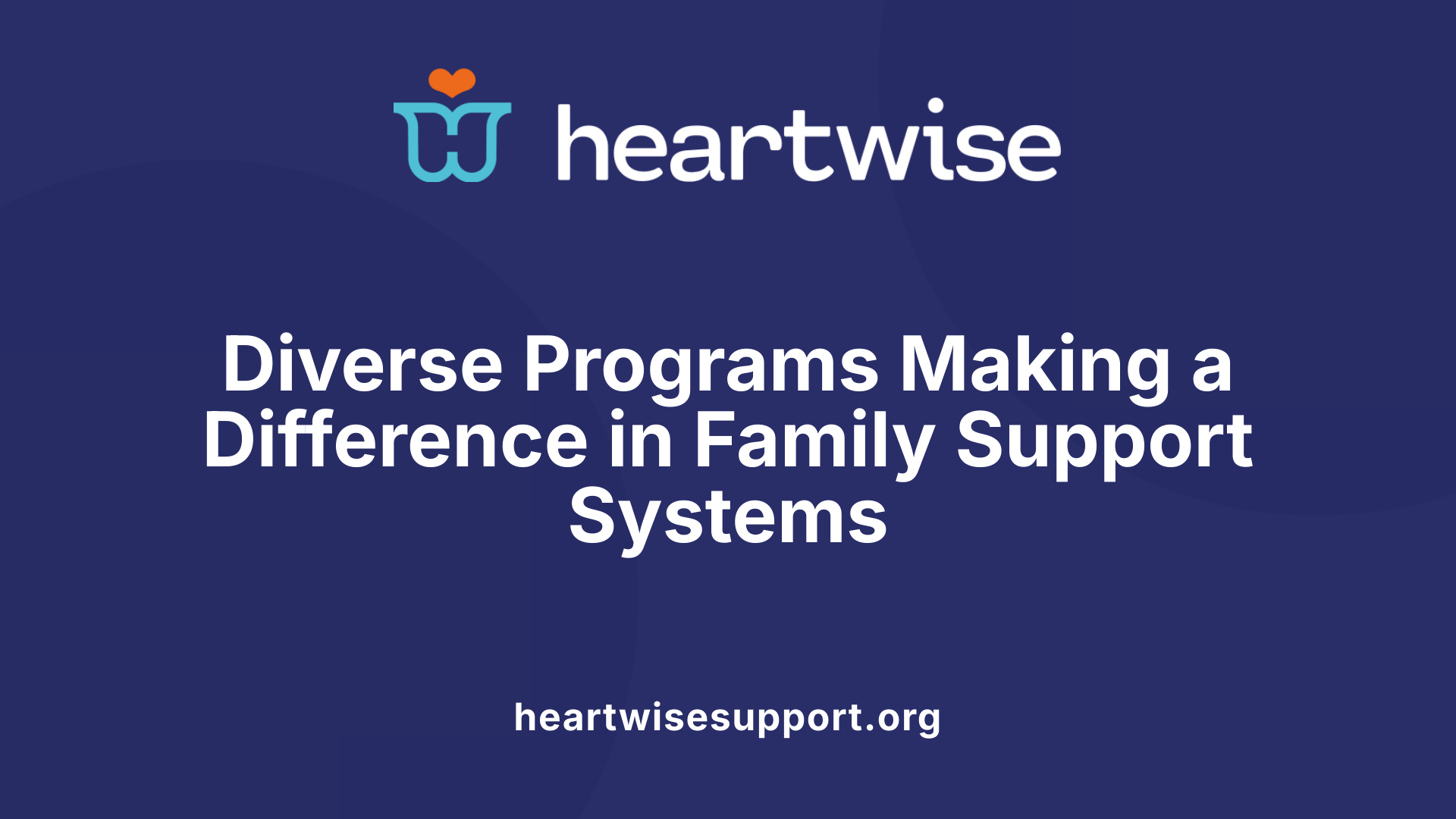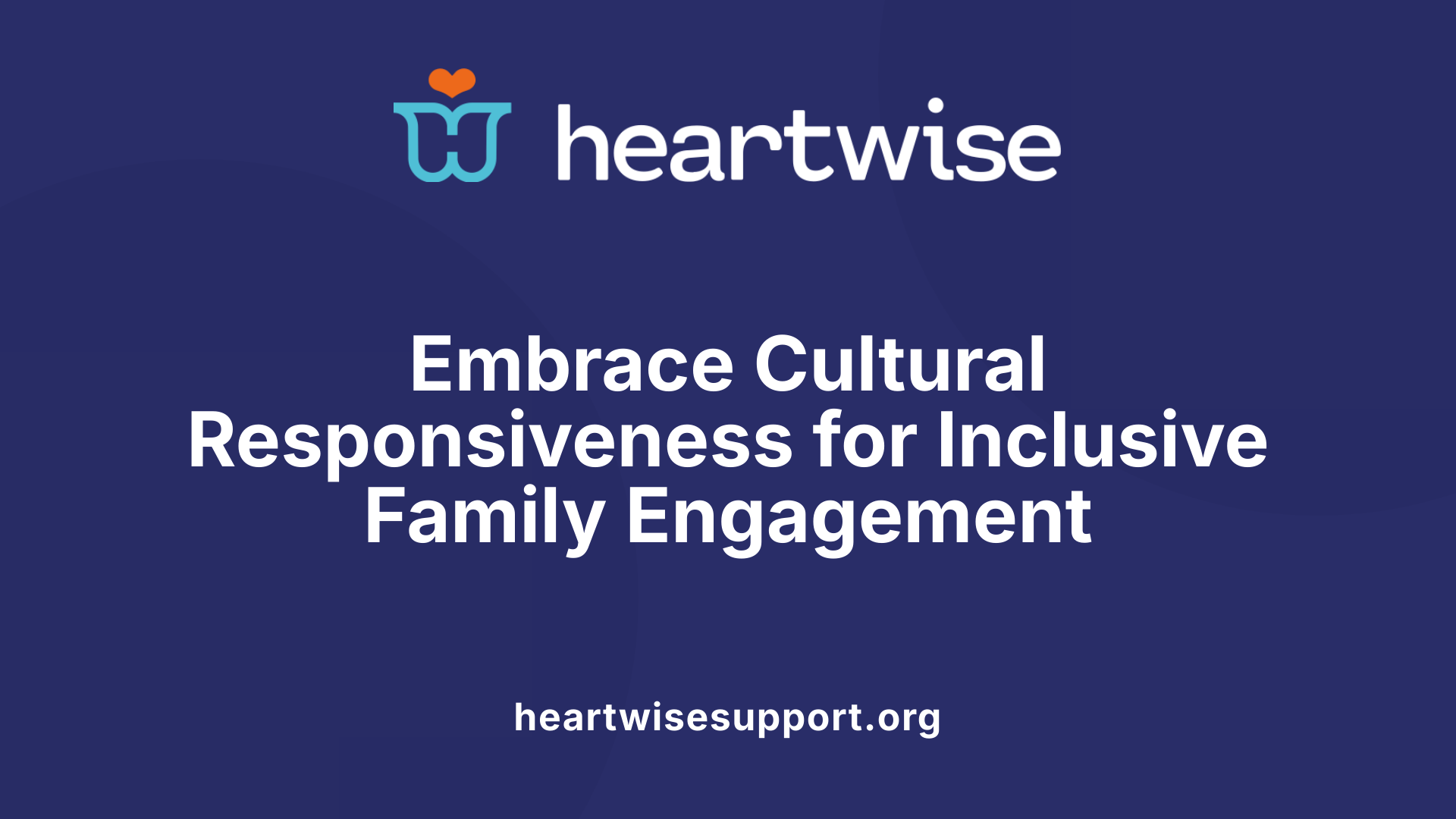Establishing Robust Family Support Structures
Creating effective family support networks is vital for nurturing resilient, healthy families and fostering vibrant communities. These networks serve as vital connectors that provide emotional reassurance, practical assistance, and essential resources, helping families overcome challenges and thrive. This article explores strategies for building and maintaining such networks, examines their key functions and benefits, and highlights initiatives that support families in various contexts.
Understanding the Purpose and Benefits of Family Support Networks

What are the key functions and benefits of family support networks?
Family support networks play an essential role in strengthening families' resilience and overall well-being. Their main functions include providing emotional reassurance, practical assistance, and access to vital resources such as healthcare, housing, and financial aid. These networks help families manage challenges more effectively by offering tailored programs like counseling and financial advice, which improve family communication and functioning.
Peer support is a core component, creating communities where caregivers and families can share experiences, reduce feelings of social isolation, and foster empowerment. This communal approach not only enhances individual family stability but also promotes healthier relationships within the community.
Furthermore, family support services work actively to overcome systemic barriers such as language differences, stigma, and lack of information, ensuring that support remains accessible and culturally relevant. By addressing these issues, family networks contribute significantly to community development, creating environments where families can thrive and actively participate.
Benefits for family resilience and well-being
Having a strong support network boosts family resilience by providing emotional comfort during times of stress and practical help in daily life. These services foster confidence, enhance decision-making skills, and help families build their capacity to support each other.
In addition, support networks improve mental health and reduce feelings of loneliness, which is vital for overall well-being. The mutual sharing of experiences and resources empowers families, helping them to navigate life's challenges more robustly.
Role in community development
Family support networks are fundamental to community growth because they promote social cohesion and inclusiveness. By facilitating connections among families, community organizations, and service providers, these networks strengthen local ties and collective well-being.
Their activities foster a culture of mutual aid and shared responsibility, which can lead to broader societal benefits such as increased civic engagement, improved child development outcomes, and reduced disparities.
Summary Table
| Aspect | Description | Impact |
|---|---|---|
| Functions | Emotional support, resource linking, systemic barrier reduction | Family stability and access to services |
| Benefits | Enhanced resilience, reduced social isolation, improved mental health | Overall family and community well-being |
| Community Role | Facilitating social cohesion, promoting inclusiveness | Community development and civic engagement |
Strategies for Building Strong Family Support Networks
How can families build and establish support networks effectively?
Building a solid support network is essential for fostering resilience, emotional well-being, and overall family strength. Families can start by engaging in consistent, two-way communication with program staff, educators, and community organizations. This open dialogue helps create trust, ensures needs are understood, and promotes shared goals.
Participating actively in decision-making processes within programs and community groups empowers families and helps tailor support to their unique situations. When families take part in planning and feedback sessions, they feel more connected and invested.
Sharing resources and knowledge is another vital step. This can include exchanging parenting tips, community information, or even offering volunteer services. Creating welcoming environments—whether through support groups, community events, or informational sessions—encourages participation and peer support.
Moreover, programs should foster respectful and culturally competent interactions by implementing inclusive policies, offering training for staff, and respecting family diversity. Addressing normal challenges such as basic needs (food, housing, healthcare) and connecting families with local resources amplifies their support system.
Sustaining these networks involves ongoing outreach, transparent sharing of information about services, and encouraging family involvement in advocacy and governance. By actively cultivating these relationships, families develop sustainable, reciprocal connections that bridge individual needs with community support, ultimately creating a nurturing environment conducive to the well-being of children and caregivers alike.
Techniques for Enhancing Family and Community Engagement

What techniques can strengthen family and community involvement in supporting children and families?
Enhancing family and community participation requires strategic approaches that create meaningful connections and foster trust.
One effective method is utilizing diverse communication channels. Employing digital platforms like emails, social media, and community apps, along with multilingual materials, ensures messages reach all families regardless of language or access barriers. This inclusivity helps keep families informed and engaged over time.
Providing varied opportunities for involvement also plays a vital role. Events such as parent-teacher conferences, open houses, volunteer days, and educational workshops allow families to participate actively in their children's education and well-being. Flexibility in scheduling these activities accommodates busy family routines and encourages broader attendance.
Building genuine trust is essential. Personal face-to-face interactions, culturally responsive outreach, and two-way communication that values family input foster authentic relationships. Addressing common barriers—like transportation, language differences, or cultural misconceptions—by offering translation services, transportation support, or culturally aware programs helps make participation accessible.
Forming strong community alliances with local organizations, faith groups, and service providers broadens support networks and reinforcing community ties.
Recognizing family contributions and involving them in decision-making processes, such as advisory councils or planning committees, promotes shared ownership and collaboration.
Creating a welcoming environment in schools and community centers, where families feel valued, respected, and supported, encourages ongoing engagement. These strategies collectively build a strong foundation for sustained involvement and shared commitment to children's holistic development.
Examples of Family Support Initiatives and Programs
 Family support systems encompass a variety of strategies that aim to involve families actively in their children's growth and well-being. Effective initiatives often include establishing family resource centers that serve as hubs for connecting families with essential services like healthcare, legal aid, and housing support.
Family support systems encompass a variety of strategies that aim to involve families actively in their children's growth and well-being. Effective initiatives often include establishing family resource centers that serve as hubs for connecting families with essential services like healthcare, legal aid, and housing support.
Support groups are another vital example, providing safe spaces for families to share experiences, exchange advice, and gain emotional support. These groups can focus on specific challenges such as parenting children with disabilities or managing mental health issues.
Community partnerships play a critical role by fostering collaborations among schools, healthcare providers, and local organizations. These partnerships help develop a broad network of support, ensuring families have access to diverse resources and assistance.
Additionally, implementing family-centered policies that promote meaningful engagement encourages families to become active participants in decision-making processes related to education, health, and social services. Many programs include family leadership roles and involve family members in advisory boards, helping tailor services to their cultural and individual needs.
Workforce training is essential to ensure professionals engage with families respectfully and inclusively. This training emphasizes cultural competency and effective communication, building reciprocal trust.
Ongoing education and quality improvement initiatives help sustain and enhance family support efforts, promoting better outcomes for children and their caregivers.
Here is a summary of some foundational programs and strategies:
| Program Type | Purpose | Typical Activities | Additional Details |
|---|---|---|---|
| Family Resource Centers | Connect families to services | Information sharing, workshops | Serve as a central community hub |
| Support Groups | Emotional and peer support | Sharing experiences, counseling | Focus on specific challenges |
| Community Partnerships | Broaden resource access | Collaborations among agencies | Foster comprehensive support networks |
| Family-Centered Policies | Promote engagement | Involvement in decision-making | Culturally responsive and accessible |
Collectively, these efforts foster reciprocal relationships, provide accessible information, and build trusting community ties that empower families to support their children’s development and well-being.
For further exploration, searching for "Family support initiatives and community programs" can yield additional ideas and examples tailored to diverse community needs.
Principles for Cultivating Effective Family Partnerships

What are the fundamental principles for building partnerships with family support networks?
Building strong relationships with families is essential for their children's well-being and development. The foundational principles include mutual trust and respect, which create a safe environment for open dialogue and collaboration. Recognizing families as equal partners with valuable insights about their children fosters a sense of shared responsibility.
Effective partnerships also prioritize ongoing, positive communication. This means engaging in honest discussions, sharing information regularly, and listening actively to families' concerns and needs. Clear, consistent communication helps build understanding and trust over time.
Cultural responsiveness is another critical aspect. Professionals should appreciate and incorporate families’ cultural backgrounds, traditions, and perspectives into the partnership. This approach promotes inclusiveness and respect, ensuring that support strategies are relevant and sensitive to diverse family needs.
To develop these relationships, practitioners need to adhere to shared goals—focusing on the child's growth, learning, and emotional health. Aligning efforts around common objectives encourages families and professionals to work collaboratively, making joint decisions that benefit the child.
Maintaining these relationships requires a continuous commitment. Reflecting on communication strategies, being adaptable, and demonstrating genuine care help sustain engagement. Utilizing resources like guidelines, frameworks, and training can support professionals in fostering effective, equitable partnerships.
In conclusion, prioritizing trust, respect, cultural understanding, and shared goals leads to meaningful collaborations. These relationships are pivotal for creating supportive networks that enhance children’s development, strengthen families, and promote long-term well-being.
Implementing and Sustaining Support Networks for Long-term Impact
Leadership and facilitation roles
Effective family support groups require strong leadership, often provided by an experienced facilitator. This person helps maintain a positive atmosphere, manages disruptions, and keeps discussions on track. Good facilitators are skilled at balancing group dynamics, resolving conflicts, and fostering trust among members.
Maintaining engagement
Sustaining the interest of members is crucial. Strategies include recruiting new participants through social media, outreach at schools and healthcare centers, and community events. Consistent communication, reminders, and engaging activities are essential, especially for virtual groups facing unique challenges like distractions and technical difficulties.
Adapting to changing needs
Families' circumstances evolve over time. Support networks must remain flexible by regularly evaluating their effectiveness and making adjustments. Listening to feedback, introducing relevant topics, and responding to emerging challenges help maintain the group's relevance and impact.
What are the key factors for maintaining effective family support groups?
Persistent effort and proactive management are central to the longevity of family support groups. A dedicated, experienced facilitator helps keep the group positive and goal-oriented. Maintaining a core set of committed members encourages continuity and trust.
Roles and responsibilities within the group streamline operations and prevent burnout. Continuous recruitment efforts via social media, community outreach, and collaborative events ensure fresh perspectives and sustained interest. Additionally, addressing the specific obstacles faced by virtual groups—such as distractions, inconsistent attendance, and technology issues—with targeted strategies like short meetings, regular reminders, and interactive content enhances participation.
Adaptability is also vital. Regular assessments to identify changing family needs and incorporating this feedback allow support networks to evolve, remain relevant, and effectively serve their communities. Ultimately, persistent collective effort, strategic leadership, and ongoing adaptation form the foundation for thriving, impactful family support groups.
Fostering a Culture of Continuous Support
Creating and maintaining strong family support networks is an ongoing process that requires dedication, collaboration, and adaptability. By establishing trust, leveraging community resources, and engaging families meaningfully, communities can support family stability and children's development. Initiatives like Family Resource Centers and support groups, guided by principles of cultural responsiveness and shared goals, build resilient families and healthier communities. Emphasizing relationship-building and proactive outreach ensures lasting impact, empowering families with the tools and connections necessary to thrive.
References
- Building a Support Network That Evolves With Your Child's Needs
- 4 Best Practices for Connecting Families to Community Resources
- What is a support network? 6 expert tips for building one - Rula
- Developing Your Support System - School of Social Work
- NFSN - National Family Support Network
- Starting and Sustaining Family Support Groups
- Georgia Family Support Network
- 6 Ways to Build a Network of Support for Your Child at School











